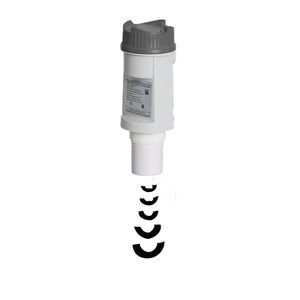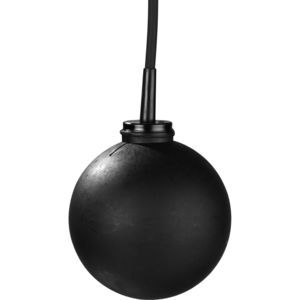
- Metrology - Laboratory
- Analytical Instrumentation
- Leakage probe
- Fluid.iO Sensor + Control GmbH & Co. KG
Leakage probe ELHleak detectorintrinsically safestainless steel
Add to favorites
Compare this product
Characteristics
- Measured value
- leakage
- Applications
- leak detector
- Other characteristics
- stainless steel, intrinsically safe
Description
The screw connection of the ELH is made of PVC, the probe body of the ELH is made of the materials PE, PPH, PVC or PVDF, depending on the requirements. The electrode tips are made of stainless steel 1.4571, Hastelloy B, Hastelloy C, titanium, tantalum or glass-carbon pins. This makes the ELH suitable for use with highly aggressive media. The cable length can be adjusted at the screw connection of the ELH .
The electrode relays ER-107..., ER-217... or ER-145... (intrinsically safe control circuit) supply a measuring voltage which causes an operating current to flow through the signal line via the resistor installed in the conductive electrode. If the conductive medium rises to the level of the electrode tips of the level detector, a circuit is closed. This causes the potential-free output contacts on the electrode relay to switch over.
In order to cope with the different conductivities of the liquids, the electrode relays ER-107..., ER-217... or ER-145... can be supplied in two different response ranges (1...30 kΩ / 6...90 kΩ). Within these ranges, the response value can be adjusted by means of a potentiometer.
If there is a line interruption, the output contacts are switched over (as in the case of an alarm caused by reaching the response level or voltage failure). If a line short-circuit occurs, this corresponds to an "alarm message" (as in the case of reaching the response level). The electrode relay operates according to the closed-circuit current principle, i.e. in the event of a power failure, the output contacts switch in the same way as when the response level is reached.
Catalogs
Leak Detectors
2 Pages
Other Fluid.iO Sensor + Control GmbH & Co. KG products
level measurement
*Prices are pre-tax. They exclude delivery charges and customs duties and do not include additional charges for installation or activation options. Prices are indicative only and may vary by country, with changes to the cost of raw materials and exchange rates.









